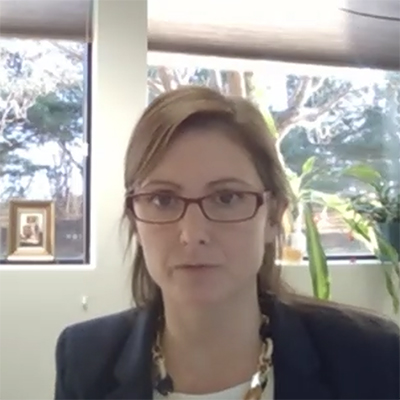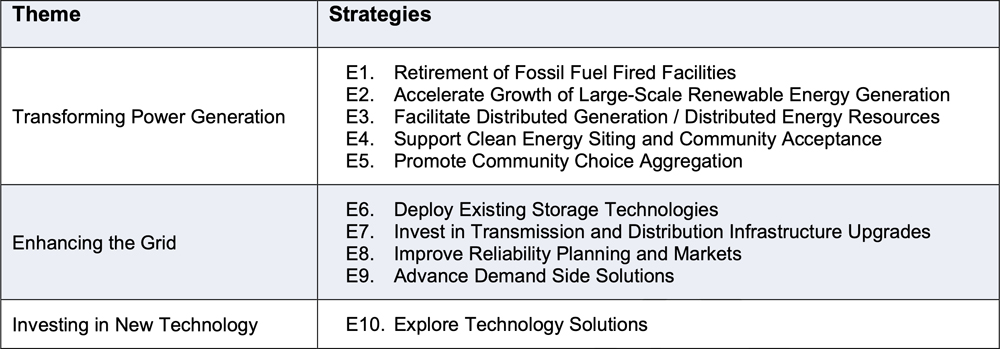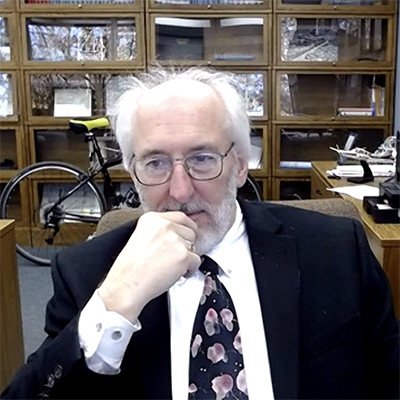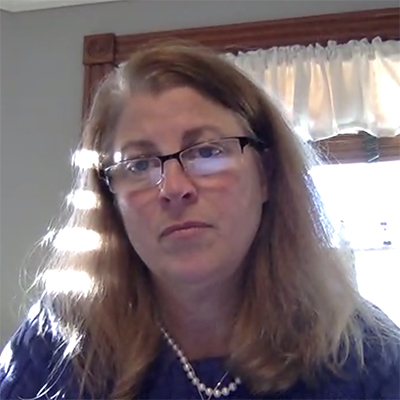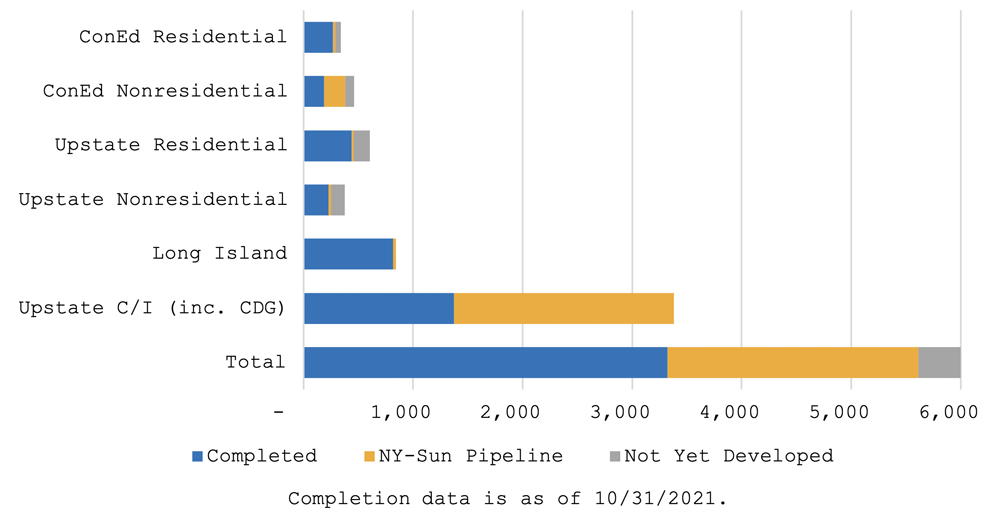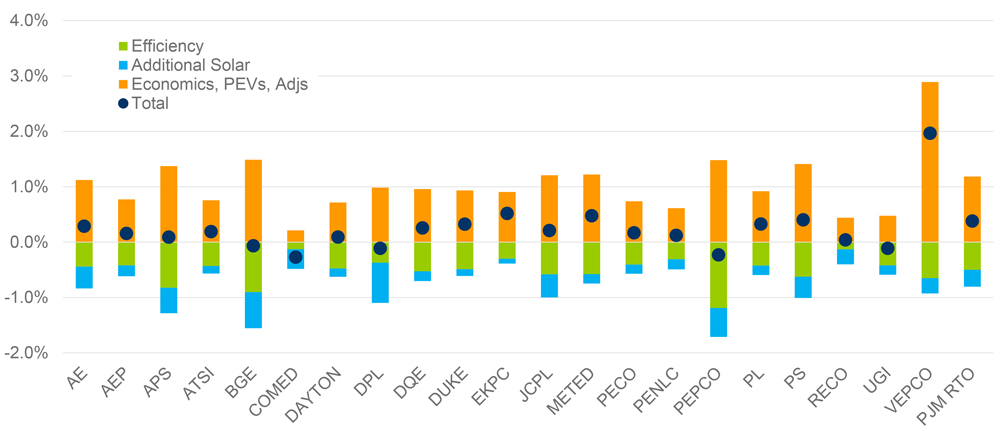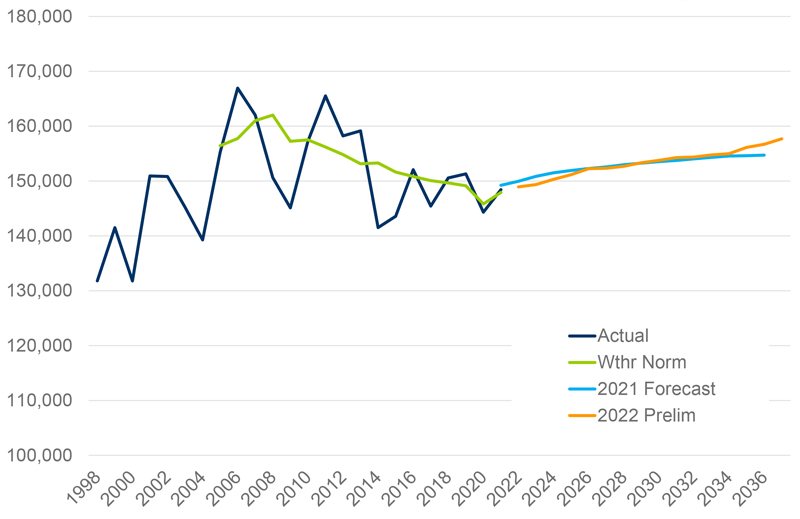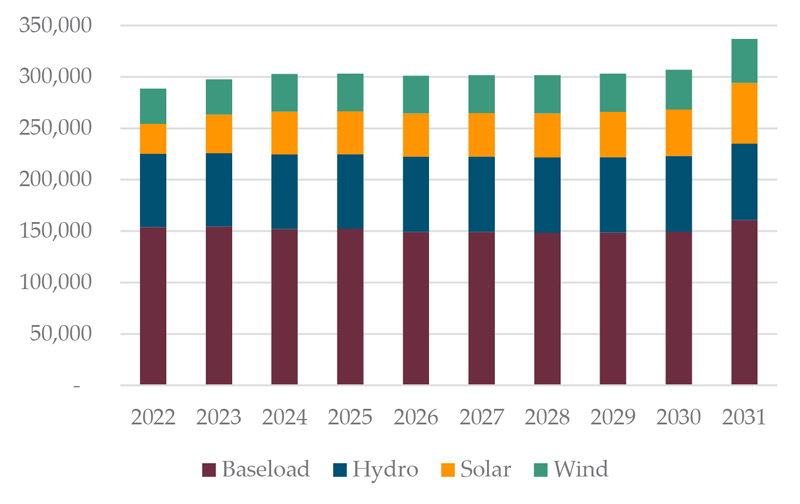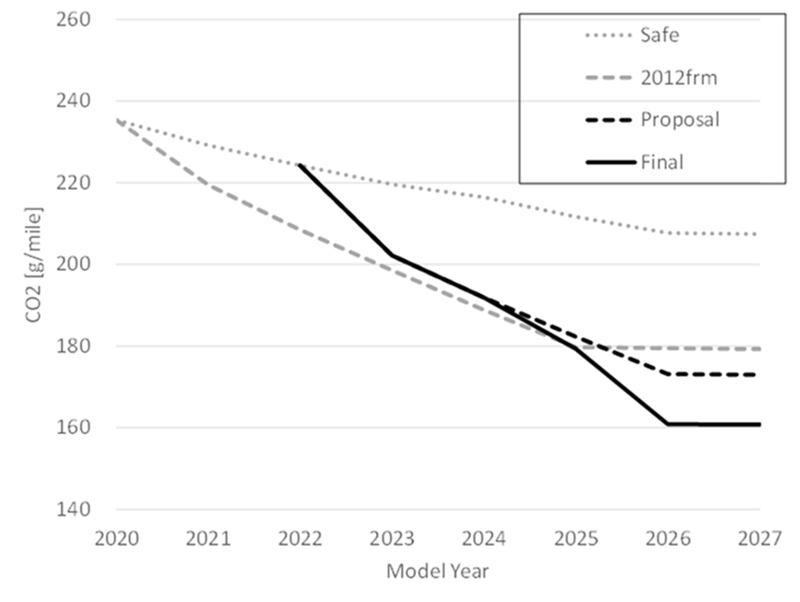Markets and Reliability Committee
Synchronous Reserve Endorsed
Stakeholders at Wednesday’s Markets and Reliability Committee meeting endorsed a PJM proposal to improve the deployment of synchronized reserves during a spin event.
The proposal, which was developed from discussions in the Synchronized Reserve Deployment Task Force (SRDTF) and endorsed at the November Operating Committee meeting, received a sector-weighted vote of 3.77 (75.4%), surpassing the necessary 3.335 threshold for endorsement. (See “Synchronous Reserve Endorsed,” PJM Operating Committee Briefs: Nov. 4, 2021.)
Ilyana Dropkin, an engineer in PJM’s performance compliance department, reviewed the proposed solution and corresponding tariff and Operating Agreement revisions addressing synchronous reserve deployment.
Synchronized reserve events are emergency procedures triggered by PJM to maintain grid reliability in accordance with NERC’s Resource and Demand Balancing (BAL) standards. The RTO invokes those procedures under conditions such as the simultaneous loss of multiple generating units or a sudden influx of load.
The SRDTF examined ways to secure controlled deployment of synchronized reserves throughout emergency events by using tools such as real-time security-constrained economic dispatch (RT SCED) to maintain consistent pricing and dispatch signals. Dropkin said the goal was to ensure BAL compliance during the recovery process and maintain a reliable transition in and out of emergency events and to define clear rules and expectations that address how PJM operators approve RT SCED cases around a synchronized reserve event.
PJM’s proposal creates an intelligent reserve deployment (IRD), a SCED case simulating the loss of the largest generation contingency on the system and for which approval of the case will trigger a spin event. The proposal takes the megawatts of the largest generator contingency and adds them to the RTO forecast to simulate the unit loss. PJM can then flip condensers and other inflexible synchronized resources cleared for reserves to energy megawatts and procure additional reserves to meet the next largest contingency.
Some of the significant changes over the status quo in the proposal include updating the economic basepoints to replace all-call instructions, Dropkin said, along with having active constraints controlled by IRD so that deployed resources don’t have negative impacts on the constraints.
PJM is looking at a phased approach for IRD, with an initial phase of six to 12 months beginning as soon as March.
IRD updates will be provided at OC meetings beginning next year, including a review of performance metrics and solicitation of feedback and a finalized deployment approach and adjustment for upcoming reserve market changes.
“IRD is an out-of-the-box solution that seamlessly integrates into PJM’s existing dispatch applications,” Dropkin said.
Mike Bryson, PJM senior vice president of operations, said the RTO has always been focused on recovering reserves as quickly as possible “to be ready for the next bad thing to happen.” Bryson said the proposal retains that focus for reliability issues.
Susan Bruce, counsel to the PJM Industrial Customer Coalition, said the ICC “continues to have concerns” with the proposal. Bruce previously brought up issues with the proposal at the November MRC meeting, saying IRD didn’t appear to be the correct solution. (See “Synchronous Reserve Deployment Stakeholder Initiative,” PJM MRC/MC Briefs: Nov. 17, 2021.)
“As PJM goes out to get reserves that we’re going to call ‘shortage,’ I think it is problematic from our perspective and a just and reasonable rate perspective,” Bruce said.
Market Monitor Joe Bowring said he believed the status quo was preferable to PJM’s proposal because the IRD will result in “inefficiently high prices.” Bowring said RTO load under IRD would continue to increase by the largest contingency megawatts even though “that’s generally too big” and results in overresponse during spin events.
Sean Chang of Shell Energy said his company supported PJM’s proposal because it “takes a step in the right direction.”
The proposal will have a final endorsement vote at the January Members Committee meeting.
Regulation Market Senior Task Force Endorsed
A new senior task force aimed at examining PJM’s current regulation market design was unanimously endorsed by stakeholders as discussions continue on how to advance a short-term solution to the undefined regulation mileage ratio calculation issue debated for several months.
Danielle Croop, senior lead market design specialist at PJM, reviewed the problem statement and issue charge first presented at the November MRC meeting. (See “Undefined Regulation Mileage Ratio Calculation,” PJM MRC/MC Briefs: Nov. 17, 2021.)
Croop said the language in both documents was similar to language that created the former Regulation Market Issues Senior Task Force that last met in 2017. Stakeholders at the June 2017 MRC meeting agreed on a proposal developed in the task force that changed compensation in the regulation market. (See PJM Regulation Compensation Changes Cleared over Opposition.) The proposal was ultimately rejected by FERC. (See FERC Rejects PJM Regulation Plan, Calls Tech Conference.)
The proposal to look at the regulation market design came in response to stakeholder feedback at the October MRC meeting after stakeholders rejected two different proposals to change the undefined regulation mileage ratio calculation in Manual 28 and the tariff. (See “Regulation Mileage Ratio Fails,” PJM MRC/MC Briefs: Oct. 20, 2021.)
Regulation mileage measures the amount of movement the regulation control signal requests of a resource; it is calculated for the duration of the operating hour for each regulation control signal.
PJM’s performance-based regulation market splits the dispatch signal in two: RegA for slower-moving, longer-running units; and RegD for faster-responding units that operate for shorter periods, including batteries. If a signal is “pegged” high or low for an entire operating hour, the corresponding mileage would be zero for that hour.
The RTO has witnessed an increase in the frequency and duration of RegA signal pegging, highlighting a potential problem in the regulation mileage ratio calculation. The RegA mileage can be set at zero for a given hour and create a divide-by-zero error in the calculation of the mileage ratio.
PJM proposed setting the RegA mileage floor at 0.1 instead of zero, which would provide a solution for the division ratio and still maintain market design objectives while having no impact on the regulation signal design, operations or regulation market clearing.
The Independent Market Monitor proposed a cap of 5.5 on the realized mileage ratio in all hours instead of 0.1, indicating the cap would eliminate the current undefined mileage ratio result that PJM is attempting to address.
Members said other larger issues with the regulation market needed review besides the undefined regulation mileage ratio calculation, and PJM said it supported a broader review through a new task force. (See “RTO to Propose Review of Regulation Market,” PJM MIC Briefs: Nov. 3, 2021.)
Key work activities in the task force issue charge include regulation market education, evaluating the benefits factor curve and proscribed RegA/RegD commitment percentages, and proposing any modifications to the regulation market to address issues raised in the evaluation. Expected deliverables include potential modifications to the regulation market and changes to the tariff, OA and manuals resulting from the regulation market modifications.
Areas up for evaluation include signal design, performance scoring, regulation market clearing and regulation settlement.
Croop said the review is expected to take 12 months and would start sometime in the second or third quarter of 2022.
“This will really give us the opportunity to evaluate any operational or market components of the regulation market design,” Croop said.
Adam Keech, PJM vice president of market design and economics, discussed the next steps the RTO was examining to resolve the undefined regulation mileage ratio calculation issue. Keech said PJM had a couple conversations with the Monitor since the November MRC meeting to find a compromise between the proposed RegA mileage floor values of 0.1 and 5.5, but did not come to a compromise.
“We’re just coming at this issue from two different angles,” Keech said. “It’s just two different views on how to tackle this issue.”
If a short-term solution cannot be determined and a divide-by-zero error in the calculation of the mileage ratio occurs, Keech said, PJM would make a Section 206 filing with FERC to propose a replacement rate for the specific occurrence of the undefined mileage ratio.
Paul Sotkiewicz of E-Cubed Policy Associates said he was interested in having discussions on market designs but didn’t want to see a RegA mileage floor number “picked out of a hat” without justifying the chosen value.
“We’re not prepared to support just any number just for the sake of getting a number in there,” Sotkiewicz said.
Bowring said the current regulation market design is not working properly, and the undefined mileage ratio is “one symptom of it.” He said a short-term fix would be the best outcome for now to solve for the problem while stakeholders discuss the broader issues.
“There is no magic to the exact number,” Bowring said. “It’s really up to the judgment of the participants to pick that number.”
Tariff Revisions Rejected
Stakeholders rejected proposed revisions to attachment DD of the tariff endorsed by the Governing Document Enhancement and Clarification Subcommittee after being pulled from the consent agenda.
The committee voted against the revisions with a sector-weighted vote of 2.17 (43.4%), coming under the necessary 3.335 threshold for endorsement.
The revisions included removing section 6.2(c) of the attachment because FERC affirmed PJM’s position that this section of the tariff was no longer applicable and encouraged the RTO to remove the provision as part of its next tariff clean-up filing.
In a complaint filed in June, Jackson Generation alleged that PJM violated section 6.2(c) of attachment DD by failing to file a report concerning the minimum offer price rule (MOPR) offer floor and other mitigation determinations made in connection with the Base Residual Auction for the 2022/23 delivery year within seven days of the deadline for the submission of sell offers into that auction (EL21-82).
FERC denied the complaint, saying the requirement to file a report detailing any determinations was “only applicable to the mitigation determinations that are ‘identified in such sections as subject to the procedures of section 6.2(c),’” and that several provisions contained in the section “no longer state that they are subject to the procedures of section 6.2(c).”
The commission previously ruled in favor of Jackson Generation in a related filing in which the company challenged the rejection by PJM and the Monitor of its request to use an asset life of more than 20 years in calculating the plant’s unit-specific exception to the MOPR. (See PJM Must Consider Longer Asset Life for Generator.)
Jeff Whitehead of Eastern Generation requested that the revisions be pulled from the consent agenda, saying that issues surrounding the unit-specific review process and the market seller offer cap (MSOC) for the upcoming BRA have created a desire among some stakeholders for more transparency in the process. (See PJM Requests Rehearing of MSOC Change.)
Whitehead said many of the negotiations on the unit-specific offer levels are “happening behind closed doors,” and market participants of FERC don’t have a “very clear view of exactly what the standards for review are.”
Sotkiewicz made a motion to table the vote on the tariff revisions until the sunset of the Resource Adequacy Senior Task Force and discussions on the MOPR are complete. Sotkiewicz, who represents Jackson Generation, said the company continues to disagree with FERC’s finding that section 6.2(c) was an “orphaned” part of the tariff and could be removed.
“The plain English is actually quite clear that there needs to be a report filed,” Sotkiewicz said. “We need to shine some light on this.”
The motion to table failed in a sector-weighted vote of 3.329 (66.5%), narrowly missing the necessary 3.335 threshold for endorsement.
Stu Bresler, PJM’s senior vice president of market services, said he appreciated the stakeholder discussion on the issue, adding the RTO will now examine next steps.
“I hear a very common desire for transparency in this area, so we will work towards that and figure out how to move ahead,” Bresler said.
Solar-battery Hybrid Resources Endorsed
Stakeholders unanimously endorsed the proposed solution and corresponding tariff and Operating Agreement revisions to address market participation by solar-battery hybrid resources.
The proposal, which updates PJM’s governing documents and manuals, was originally endorsed at the August Market Implementation Committee meeting with 99% stakeholder support before coming to the MRC. (See “Solar-Battery Hybrid Proposal Endorsed,” PJM MIC Briefs: Aug. 11, 2021.)
Andrew Levitt, of PJM’s market design and economics department, reviewed the RTO’s solar-battery hybrid resources issue. Levitt said PJM conducted a prefiling meeting with FERC staff in September, and the commission made suggestions to reconfigure the language to increase its chances for approval. (See “Solar-battery Hybrid Resources,” PJM MRC/MC Briefs: Nov. 17, 2021.)
One suggestion called for the term “hybrid resource” in the tariff to be structured as a largely independent resource-neutral category and not specifically about solar-battery resources.
Levitt said the proposal was intended to clarify energy and ancillary services market participation rules, including metering and telemetry and basic operational requirements, with the tens of gigawatts of solar-battery mixed technology facilities currently in the PJM queue.
PJM was hoping to present the exact tariff language presented at the November MRC meeting for a vote, Levitt said, but staff found some “minor clerical errors.”
Levitt said the RTO hopes to go live with the new energy market model for hybrid resources in mid-2023.
A final vote on the proposal will take place at the January MC meeting.
Consent Agenda
As part of the consent agenda, the committee endorsed several revisions to:
- Manual 6: Financial Transmission Rights, conforming to the joint PJM-stakeholder proposal addressing auction revenue rights (ARR) and financial transmission rights (FTR) endorsed at the October MRC. The changes were initiated after the GreenHat Energy default in 2018, including a six-month review by an independent consultant and work done at the ARR/FTR Market Task Force. (See Stakeholders Endorse PJM ARR/FTR Market Changes.) Seven stakeholders abstained from the vote on the Manual 6 revisions.
- Manual 10: Pre-Scheduling Operations resulting from a periodic review. The revisions were endorsed at the November Operating Committee meeting. (See “Manual Changes Endorsed,” PJM Operating Committee Briefs: Nov. 4, 2021.)
- Manual 14B revisions resulting from a biennial review. The revisions include the addition of a new section that features details about the incorporation of end-of-life needs in the Regional Transmission Expansion Plan, which were part of the tariff attachment M-3 discussions. (See “Manual Endorsements,” PJM PC/TEAC Briefs: Nov. 2, 2021.)
- Manual 14D: Generator Operational Requirements resulting from a periodic review. The updates featured the addition of several new sections, including one describing eDART modeling requirements. (See “Manual Changes Endorsed,” PJM Operating Committee Briefs: Nov. 4, 2021.)
Members Committee
Sector Selection Challenge Process
Stakeholders questioned a proposal at Wednesday’s Members Committee meeting seeking to change the way members can be challenged on their chosen sectors in PJM.
Sharon Midgley, Exelon’s director of wholesale market development, presented proposed revisions to the sector challenge process in the OA during a first read.
The issue of sector challenges has been a source of discussion at the Stakeholder Process Forum for the last 18 months. In 2020, Exelon and FirstEnergy requested that PJM more actively police stakeholder selections after the disclosure that an LS Power affiliate was improperly voting in the RTO’s senior committees. (See Exelon, FE Ask PJM to Tighten Sector Selection Process.)
Under current rules, Midgley said, “questionable” sector selections of an existing member may only be challenged one time per year, coming within 30 days of the Annual Meeting. Challenges to a new member’s sector selection must be made within 30 days of the new member joining PJM.
In the last three years, Midgley said, PJM has required changes to the sector selections of 14 members, determining that a sector modification was warranted for 88% of challenges.
The proposed solution calls for revising Section 8.1.3 of the OA, saying any member may request that PJM review the qualification of another member to participate in a sector “if the basis for such challenged member’s qualifications have not been subject to a sector challenge review in the prior 24 months, unless there is a material change in the challenged member’s business interests with PJM.”
The revised language also calls for removing the 30-day requirement from the Annual Meeting. Midgley said the requirement can be “challenging” for stakeholders to do “proper investigative work” on a sector challenge.
“We’ve got over 1,000 members, and sometimes just a simple email with their name doesn’t really tell you much about the business that they’re in or the interest they have in PJM,” Midgley said.
Bruce said the ICC has “concerns” about the proposal, and that members make “personal” decisions about how they want to engage with PJM in the stakeholder process. He said PJM has done a lot of work in recent years on the “know-your-customer” efforts and has taken a “harder look” at sector selections for members.
Bruce said she worries that stakeholders’ ability to use the challenge process at any time of the year could become a “way of affecting voting outcomes.”
“I worry about the integrity of our voting and our stakeholder engagement if there’s a threat that someone may be sector challenged before an important vote,” Bruce said.
Steve Lieberman, assistant vice president of transmission and PJM affairs for American Municipal Power, said the OA changes read “like we have a solution in search of a problem.” Lieberman would rather see changes focused on the appeals process to a sector challenge.
The committee will vote on the proposed changes at the January MC meeting.
Sector Elections
Stakeholders unanimously endorsed the slate of sector representatives for the 2021/22 Finance Committee and the 2022 sector whips.
The new Finance Committee members include: Susan Bruce, PJM Industrial Customer Coalition (End-use Customer); Jeff Whitehead, Eastern Generation (Generation Owner); Bruce Bleiweis, DC Energy (Other Supplier) and; Alex Stern, PSEG Services (Transmission Owner).
The 2022 sector whips include: Adrien Ford, Old Dominion Electric Cooperative (Electric Distributor); Greg Poulos, Consumer Advocates of the PJM States (End-use Customer); Michael Borgatti, Gabel Associates (Generation Owner); Brian Kauffman, Enel N.A. (Other Supplier); and Sharon Midgley, Exelon (Transmission Owner).
